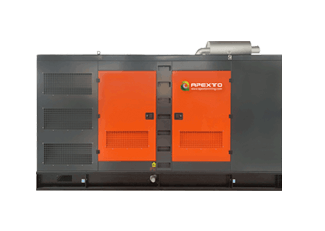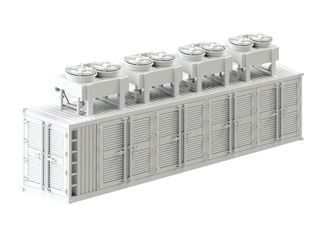KAS RATE
All CoinsWeighted average KAS rate
KAS exchange rate change
KAS characteristics
About Kaspa
What Is KASPA (KAS)?
Kaspa is a proof-of-work (PoW) cryptocurrency that redefines blockchain technology by implementing the GHOSTDAG protocol. Unlike traditional blockchains, GHOSTDAG allows parallel blocks to coexist, organizing them in consensus rather than orphaning them. This unique approach transforms the Kaspa blockchain into a blockDAG, a generalization of Nakamoto consensus. As a result, Kaspa achieves secure operation with extremely high block rates—currently one block per second, with goals of 10 blocks per second and an ambitious dream of reaching 100 blocks per second—and confirmation times limited only by internet latency.
The Kaspa implementation is packed with advanced features. It includes Reachability for querying the DAG's topology, Block data pruning with plans for block header pruning in the near future, and SPV proofs. Additionally, Kaspa is designed with future scalability in mind, as subnetwork support will simplify the development of layer 2 solutions.
What is Kaspa Used For?
Kaspa currently offers limited functionality compared to many other blockchains, as it does not yet support smart contracts or token creation. At present, the network’s use is restricted to transferring, storing, and mining its native cryptocurrency, KAS.
To expand its capabilities, the development team is rewriting Kaspa’s codebase in Rust—a widely-used language for smart contracts, employed by projects like Polkadot and Solana. This rewrite aims to introduce smart contracting and tokenization features to the network.
An alpha version of the Rust-based implementation was made available to the public in April 2023. Development is ongoing, with no announced timeline for the final release.
Pick the perfect miner from our catalog to start mining Kaspa for you!
GoWhat is GhostDAG?
GhostDAG addresses a significant issue faced by many cryptocurrencies: maintaining security as their popularity and usage grow. Traditional systems like Nakamoto consensus rely on most participants being honest to ensure security. However, simultaneous block creation by different participants can lead to orphaned blocks, where some of the work done to create blocks is wasted. This process also makes it easier for attackers to reverse old transactions by creating slightly fewer blocks than the legitimate network—a vulnerability that increases with higher block creation rates.
To overcome these challenges, GhostDAG introduces a more advanced structure called a BlockDAG, which forms a directed acyclic graph (DAG) of blocks instead of a linear chain. Unlike traditional blockchains where each block references a single parent, blocks in GhostDAG can point to multiple parent blocks, enabling parallel block creation. This approach improves throughput without compromising security. The key challenge lies in securely determining an agreed-upon order for these blocks, preventing attackers from retroactively altering the block sequence. GhostDAG’s protocol effectively solves this by establishing a secure, universally accepted block ordering.
FAQ
What Makes Kaspa Unique?
Kaspa stands out for its ability to maintain proof-of-work security while supporting exceptionally high block rates. Currently, the mainnet operates at 1 block per second, with ambitious plans to push this to 10 or even 100 blocks per second in the future, as core developers and researchers continue to test its limits.
A key feature of Kaspa is its innovative monetary policy, inspired by the 12-note musical scale. Activated on May 7, 2022, this policy, known as the chromatic phase, began with a block reward of 440 KAS. The block reward decreases geometrically, halving once per year but doing so smoothly through monthly reductions. Specifically, the reward decreases by a factor of (1/2)^(1/12) each month, mirroring the ratio of frequencies between two consecutive semitones in a tempered chromatic scale. The initial reward is tied to the frequency of the A4 note, and each averaged year of emission is referred to as an octave.
Notably, this monetary policy governs coin emissions per second, independent of block rate. If Kaspa adjusts its block rate in the future, the block reward will scale accordingly to maintain the same emission rate, ensuring the system’s stability.
How Many Kaspa (KAS) Coins Are There in Circulation?
As of November 2024, the circulating supply of KAS stands at approximately 25.1 billion.
How is the Kaspa Network Secured?
The Kaspa network relies on miners for security through its Proof of Work mechanism and utilizes an algorithm called k-Heavyhash. This algorithm was specifically selected to ensure compatibility with Photonic miners once they become available in the future.
Is KAS a Good Investment?
Kaspa stands out with unique features that might appeal to certain investors. Leveraging GhostDAG technology, it enables fast, secure transactions with high throughput. Furthermore, KAS has shown remarkable price growth since its launch, even during challenging market conditions, suggesting strong demand for the cryptocurrency.
As with any investment, decisions regarding KAS or other cryptocurrencies should align with personal financial goals and be backed by thorough research. Investors are encouraged to analyze market trends, conduct detailed evaluations, and adopt diversified strategies to mitigate risks effectively.

 Solo Miner
Solo Miner
 Bitcoin
Bitcoin
 Dogecoin
Dogecoin
 Aleo
Aleo
 Kaspa
Kaspa
 ALPH
ALPH
 Nexa
Nexa
 ETC
ETC
 CKB
CKB
 Dash
Dash
 Kadena
Kadena














































